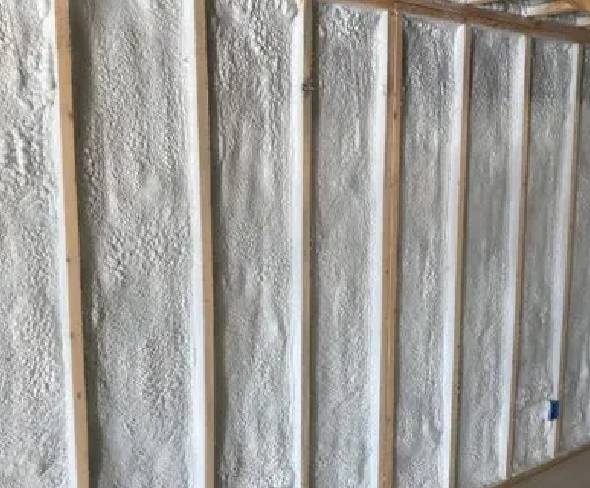
Superior Thermal & Energy Efficiency Insulation Serving All of South Central Wisconsin
Easy to use and fast to install when installed correctly, it will not shrink or settle, so its thermal and acoustical performance lasts the life of a structure. JM Corbond II SPF and its unique Lavender color have become a symbol of uncompromising quality, performance and environmental commitment.
WALLS THAT WORK
See our Q & A below for additional information about the Corbond product:
Does Corbond need venting like conventional fibrous insulations?
No. Corbond does not need venting and meets the International Residential Code (IRC) requirements for unvented cathedral zed attics. Venting was designed to carry moisture out of fibrous insulation so it can maintain its thermal efficiency and minimize the damaging effects of condensation on hidden building surfaces.
With Corbond, no air can enter into or through the product, as it’s a solid cellular foam. Since no air or moisture can get in or around Corbond, it is not necessary to be vented off.
How does Corbond control moisture movement and condensation?
Because Corbond Closed Cell spray foam does not allow the movement or exchange of air within the cavity, this moisture movement and condensation does not occur. Corbond is ideal for use in climates where buildings are both heated and air-conditioned (mixed climates) because the situation is reversed in summer with the potential for moisture to form on the back of the interior vapor retarder if fiber insulation is used.
What is the difference between Corbond and open cell foam?
Corbond creates a barrier against humidity and will not take on water. Corbond has twice the R-value of open cell foam per inch, allowing for maximum energy savings even in thin wall and roof construction.
At what point of construction is Corbond sprayed into place?
Corbond can be installed quickly with an average house of 2000 square feet taking a trained crew only 6 to 7 hours to complete.
Is Corbond environmentally friendly?
Its superior insulating capabilities dramatically reduce heating and cooling demands, reducing harmful emissions from power plants and home heating units.
